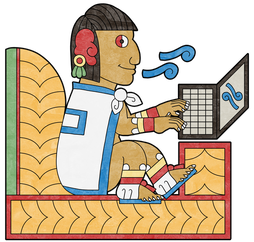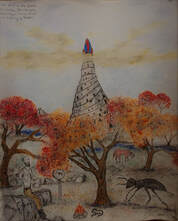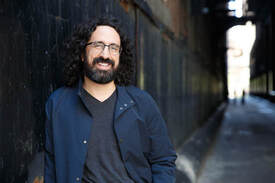"I love the United States, but it is hard to continue loving this country when you are constantly hit with the reality that it does not love you back."Reflection on Being Afro-Latina: Cuba vs. US by Shayla Moya Growing up as an Afro-Latina with Dominican heritage in the United States, Cuba was always an enigma to me. It was the one country in Latin America that was never truly discussed in depth in terms of history or culture, whether that was at home or in Spanish classes at school. The most I was allowed to know was that it had a Spanish accent unique to their country (as each Caribbean islander does), Celia Cruz comes from there, and it is controlled by a very mean communist dictator. Like any other college student, I was in search for the truth of everything and anything, especially when it came to my AfroLatino roots. After a semester abroad in Costa Rica where I learned about Latin American human rights (mostly the lack of them) and its history, I became obsessed with finding the truth about Cuba. Specifically, how progressive the country was in terms of human rights. Over a year and a half after my trip to Costa Rica, I boarded on a flight to Cuba for a ten-day academic trip. I was in search of sources and interviews that could help me uncover the evolution of human rights in Cuba from the 1952 regime of Fulgencio Batista to the 2019 presidency of Miguel Diaz Canel through the lens of the historically most oppressed groups in Latin America: women, Afro-Latinx, and LGBTQ+. My intentions were to collect the information I needed, get some on-the-ground insight, and enjoy the warm weather. I never anticipated falling in love with the artwork that covered the streets. It was one of the best welcomes I have received upon arrival to a new country. Walking down the side streets of Havana with my brown skin that was only getting darker with every passing day, I fell in love with the paintings that served as mirrors to my own Afro-Caribbean identity. I was able to appreciate the majority of the paintings during the walking tour of Havana. They could be found hanging outside art shops located around every corner. I loved how the Afro Cuban art was so in your face for every passerby to see, not in the National Art Museum where people would have to pay to see it. Through these paintings, it was portrayed how the Cuban people appreciated and even proudly identified with their African roots as the blacks located in these paintings were seen draped in the Cuban flag or smoking a cigar. The ones that caught my attention the most were the ones painted on older versions of the national newspaper Granma. “Granma” was also the name of the boat that Fidel Castro and the rest of his guerrilleros arrived to Cuba in at the start of the Revolution. It is a key component of Cuban history so to see a brown skinned woman with an afro that reached the corners of the page, a smile on her face while covering her body in the Cuban flag painted on a copy of the Granma, it screamed to me “THIS is Cuba. I am Cuba. Your country may see me as ugly but here I am so beautiful that I get to have my face on the walls.” At the end of my trip, after all the warm feelings of love and admiration towards seeing such beautiful Afro Cuban paintings and artwork faded away, all I was left with was envy. It has long been my belief that living in the U.S. and being a person of color is like living in a house but never seeing your picture decorate the walls. I love the United States, but it is hard to continue loving this country when you are constantly hit with the reality that it does not love you back. Through its artwork, Cuba showed me love. It showed me the beauty of femininity, of being black with an afro, curly hair and pigmented complexion. It is hard to find the beauty in these core parts of my identity in the US when everywhere I look Latinas are portrayed as light skin with straight or wavy hair, if represented at all. Whether it is in People’s “50 Most Beautiful People” only including one designated black women or movies where black women are secondary characters. Even within my own Latino culture, black women in telenovelas are always the maid or the slave. Never the one worthy of the love from a handsome prince charming. Or something as simple as seeing myself on the walls of my university. Like many POC students at my university, I am underrepresented in the current student body and the lack of black dignified alumni on the walls reminds me nothing has changed. Each portrait of an Anglo-Saxon man with his equally white privileged wife standing beside him is reminder to me that a college degree was never meant for me. It is a privilege for me to be walking the halls of the academic buildings that HIS money paid for because a black person could never afford it. The closest I can get to seeing a large group of beautiful black women in American culture is in a rap/reggaeton music video where they are rarely fully clothed, serving as a reminder that is where I am supposed to be. In Cuba, the paintings of all the Afro Latinas served as a personal reminder that my outer beauty is also seen and appreciated for more than sexual gratification. I was no longer “pretty for a black girl” or “pretty for a dark-skinned Latina” but just pretty. It could be such a simple adjective, but the words attached after it could be the difference between tolerance and acceptance. While in the US, the closest I get to Afro-loving art is on my Pinterest. Maybe that is why the painting of the black Cuban schoolgirl with the crown on her head has stayed with me. I found this painting while taking an evening stroll with some friends down the streets of downtown Havana. While walking, we came across an art studio who had an artist working on his next masterpiece inside. He invited us in to see the rest of his work and that is when I saw her. She was HUGE with hair that matched the color of the night sky, with rope glued throughout her afro to portray its kinky texture. Her skin was only two shades lighter than her hair, a contrast so subtle it blended beautifully across her face. Her eyes were wide open as she pierced into your soul with the innocence only a child can carry. She was dressed in the white shirt, red overalls and blue handkerchief tied around her neck, the typical Cuban schoolgirl uniform. It was the silver crown so beautifully placed a top of her curly afro that stood out to me the most. She was a Cuban princess in all her glory. The existence of that painting gives me hope that one day all little black girls will be able to proudly wear their crowns. That they will believe in their own beauty that everyone around them tells they have, instead of feeling like people are lying to them. It is hard to believe you are beautiful when you do not match society’s idea of beauty. It is an insecurity I always had growing up, and sometimes still have today. For me, Cuba is a haven for people of color because we finally get to see our picture on the wall. We see the reflection of our common African ancestors in the artwork, the music, the historical monuments and it is all seen as beautiful. People forget that it is not only about seeing your picture on the wall, but “White America” praising your picture the same way it has been praising the rest of the white historical figures and accomplished individuals for centuries. Representation matters which is why I work so hard to one day get my picture on the wall to serve as a reminder for all colored girls after me that they will always belong. To be the Afro-Latina draped in a US flag painted on a copy of the New York Times and have it scream “THIS is the United States of America. I am the United States of America. Here I am so beautiful that I get to have my face on the walls.”  Shayla Moya is a senior at Norwich University pursuing a Bachelor of Arts in Political Science, International Studies and Spanish. An Afro Latina whose parents are originally from the Dominican Republic, she was born and raised in Lowell, MA. She possesses a global perspective through various travel experiences to Brazil, the Dominican Republic, Poland, Czech Republic, Mexico, Cuba, and a semester abroad in Costa Rica. She has genuine passion for international human rights activism, and hopes to continue her education with a Masters in International Human Rights centered in Latin America. This is her first magazine publication with many more to come.
1 Comment
|
Archives
June 2024
Categories
All
|
Donate and Make Literature Happen
is published by the Somos En Escrito Literary Foundation,
a 501 (c) (3) non-profit, tax-exempt corporation. EIN 81-3162209










 RSS Feed
RSS Feed